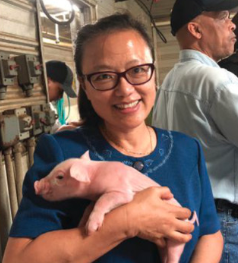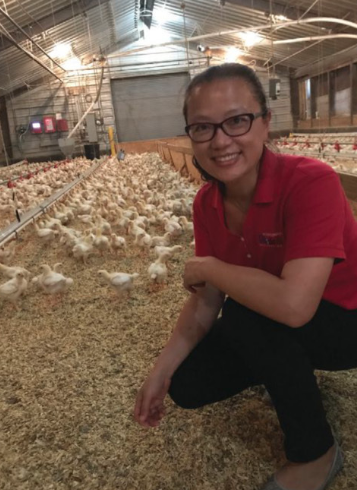This article was originally published in ASABE Resource magazine.
By Ling Wang Li
Like so many of the stories collected for this special issue, my path to agricultural and biological engineering was not my choice in the beginning. Unlike so many North Americans, the majority of high schoolers in China in the 1980s—when I passed the National College Entrance Examination—had no idea about college life and how to select a major. I turned to my parents for help, and my father convinced me to take a major in cotton engineering, because he was a cotton engineer. He loved his career, and I followed his advice — “Love what you do!”—and developed a passion for cotton engineering.
 Later on, during my graduate education, a door opened for me to pursue a career in agricultural and biological engineering.
Later on, during my graduate education, a door opened for me to pursue a career in agricultural and biological engineering.
Love of the profession
I consider agricultural and biological engineering the greatest profession.
As I see it, our profession makes the world a better place to live! We are taking interdisciplinary approaches to meeting the increasing demands for food, water, fiber, and energy with a growing world population and the ongoing reduction of natural resources. We are protecting our ecosystems and environments for all humanity. We really do “bring engineering to life!”
We are living in a rapidly changing world socially, economically, and environmentally. Unlike the old days, our profession needs to address challenges in a wide range of temporal
and spatial scales (e.g., from local to regional to global). These great challenges require systematic approaches of a multidisciplinary nature.
Door to more
Soon after I joined the North Carolina State faculty, I had the good fortune to join a multistate and multi-University team on a project called the National Air Emission Monitoring Study (NAEMS) that was overseen by the U.S. Environmental Protection Agency under the EPA’s Animal Feeding Operation Consent Agreement. I was a site PI on the project, leading a team to collect the baseline air emission data from a commercial egg production farm in the southeastern United States. The project opened the door for me to gain first-hand experience and understanding of the air emissions from the industrialized food animal production facility. Moreover, I was able to obtain an USDA-AFRI grant and an NSF CAREER award to expend the baseline air emission data collection to study the fate and transport of the emissions to advance our understanding of the impacts of the emissions.
Opening doors for women
 As a female faculty member and an engineer in the field, I have a passion for bringing more female students into our profession. I have provided summer internship opportunities
As a female faculty member and an engineer in the field, I have a passion for bringing more female students into our profession. I have provided summer internship opportunities
for female high schoolers and undergraduates, and I have trained female graduate students, collaborating with an all-female college to bring more women into our discipline.
In my career, I have worked independently as well as in collaboration with people from both academia and industry. These have been very rewarding experiences for me.
I have mentored over a dozen graduate students and visiting scholars, and most of them have become members of the Society. I have always tried to guide them to develop a vision and see the big picture (with the big door!) — to understand the impacts of what we do so that they can develop a passion for agricultural engineering and a commitment to agricultural engineering as a career. One must sometimes wait for doors to open, and one must search for them as well, particularly at the down times. I believe the Society is moving toward equality in gender, and I also believe that there will be more female students getting into our profession, and growth in female mentors. As female professionals and leaders, we must continue to do more to help young female professionals find the doors to leadership and success in our field.
